How To Wash Clothes Without Electricity /Off-Grid
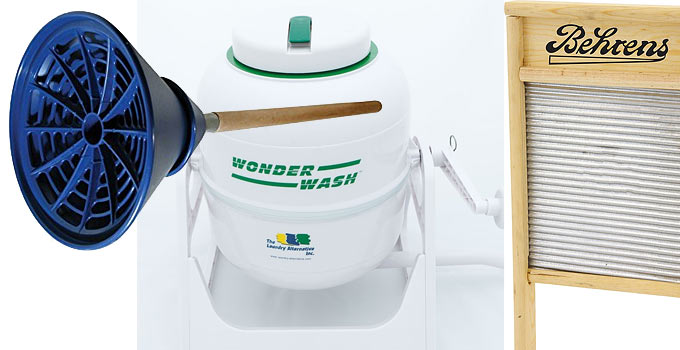
Maybe you’re planning an extended off-grid stay somewhere. Maybe you live off-grid. Or you’re wondering how to wash clothes while camping or boondocking /RV’ing. Or maybe you’re planning for what you would do during an emergency — long electric-grid-down situation. One issue that will arise is as follows… washing clothes without electricity.
Eventually you will want to wash your dirty clothes! But how to do laundry, off-grid?
What You Need To Wash Clothes Without Electricity
1. Water
2. Soap
3. Agitation
That’s basically it!
Even without soap, you can get clothes cleaner by water-soaked agitation.
Other helpful items will include some sort of wash basin, ideally two (one for wash, and the other for rinse). You might want to get yourself a relatively large basin or two (wash – rinse). You’ll find various sizes and shapes of these tubs at your local Tractor Supply Store, or equivalent store near you.
Ordinary 5 gallon buckets will work too, although they’re kind of narrow and won’t fit too many clothes at once.
Bear in mind that you could also wash clothes in a body of water too (river, stream, etc..), however a washboard is probably best for that (see below).
Also, a ‘nice to have’ item will be a clothes wringer for speeding up clothes drying times.
There are a few clever inventions that may assist in your efforts to do laundry without electricity.
Portable Clothes Agitator Plunger
While the plunger is a far cry from today’s modern washing machines, and it’s not really a ‘machine’, it will get the job done with a bit of elbow grease! You can wash clothes without electricity with this one, which is quite popular.
Basically, it’s a plunger with a built-in “breather” for agitation action, which helps to clean clothes.
Portable Agitator Plunger
(view on amzn)
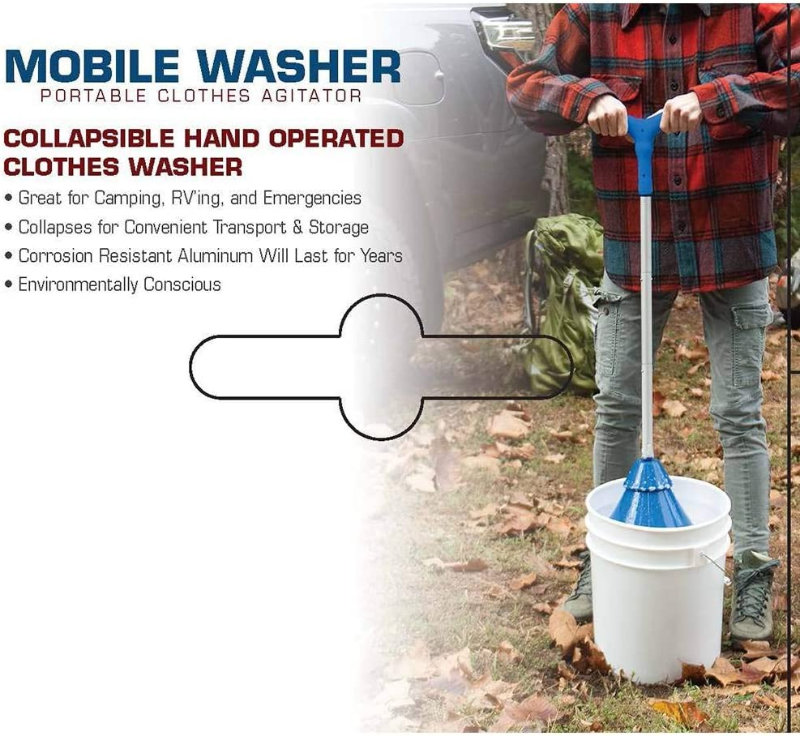
Could you use an ordinary plunger that you might already have in your bathroom? Yes, however there’s an important difference. This type of handheld mobile washer is designed to push and pull water through clothes. When you raise the plunger a few inches, the air goes in through the top portion called “the breather.” Whereas an ordinary plunger will not be as effective.
Galvanized Washboard Does Not Require Electricity!
You’ve all seen these before right? A staple during the “old days”, the washboard will get your clothes clean along with a little elbow grease. And some soap and water.
I have two washboards. One is an old ‘Capitol Line’ washboard (from a yard sale). The other is a ‘no-name’ purchased long ago.
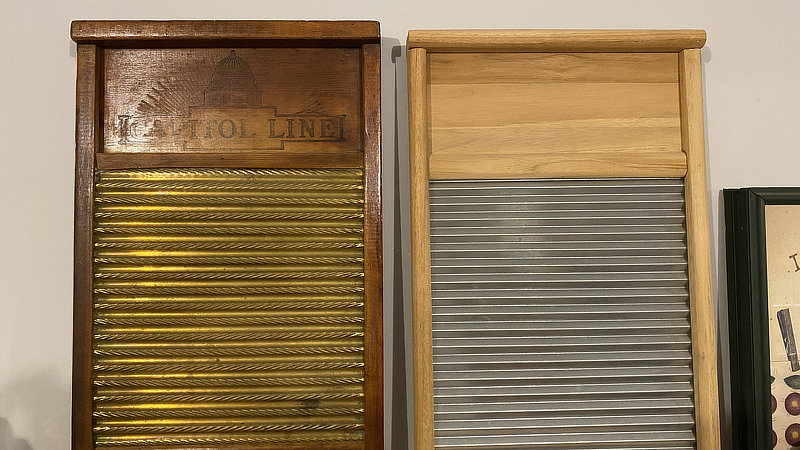
Columbus MAID-RITE Washboard
(amzn)
How to use a washboard?
We’ve done it a few different ways. However here’s one person’s description how to use a washboard:
Here is the way I was taught to use a wash board:
The wood area at top is where you set your bar of laundry soap. Put clothes in a tub of water with desired detergent and swish around for a bit.
Wet the metal surface of your washboard and rub the grid with your bar of soap. Now rub each item on the soapy surface of the wash board. Pay particular attention to stained areas. You will need to re-soap the washboard surface occasionally.
Once all clothes have been scrubbed, swish them around some more in the tub. Then drain the water, ring out the clothes, refill the tub with rinse water and swish around for a while.
Drain, wring out and, if desired, rinse a second time. I used to wash all my laundry in the bathtub with a large washboard.
~ washboard reviewer
So, yes I prefer to use the LG front loading washing machine! However, I’ve got my emergency backup clothes washers up on the shelf (grin).

Portable Compact Mini Washing Machine To Wash Clothes Without Electricity
Here’s a novel invention (actually it has been around for quite a number of years).
WonderWash Mini Washing Machine
(amzn)
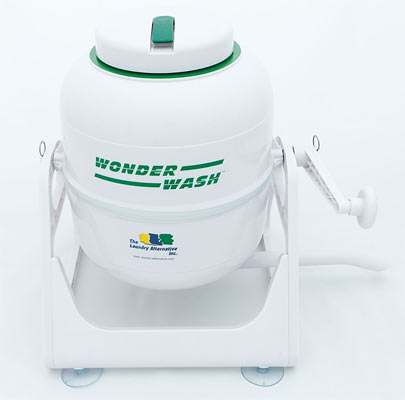
It’s a very portable hand crank washing machine. You turn it /rotate at about one revolution per second (not hard to do).
Tip: If you fill it halfway (rather than cramming it full), it’s easy to crank.
Tip: If you spin it slowly so the clothes drop from top to bottom each revolution, the clothes are slammed down through the hot soapy water 60 times per minute. So, two minutes of cranking will slosh them 120 wash rotations. However, if you spin /rotate it faster, centrifugal force will tend to keep the clothes at one end of the washer, and the clothes won’t clean properly (they won’t ‘fall’ to the other side upon each rotation).
Hand Crank Clothes Wringer
The following hand-crank clothes wringer, although not necessary, it will squeeze out much of the water and significantly speed up overall drying time:
Heavy Duty Off Grid Laundry Wringer
NORTHWOOD CALLIGER
(amzn)
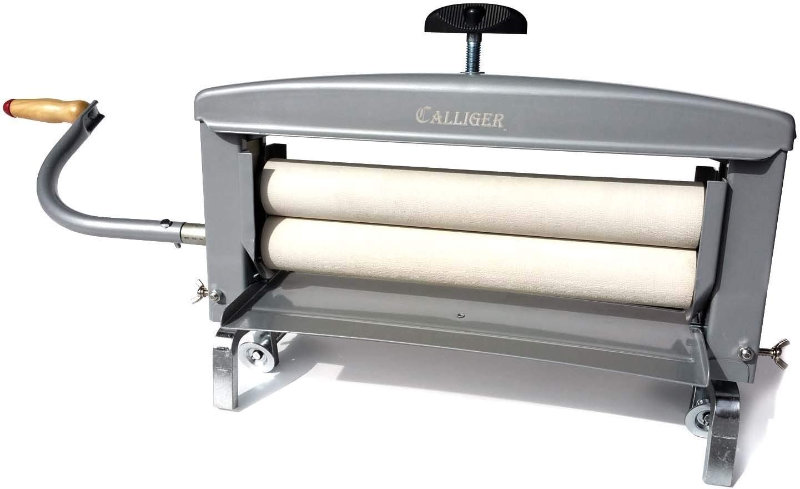
Clothes Drying Racks and Clothes Line
Mrs. J has three of those folding /collapsible wooden /bamboo racks for hanging clothes to dry. She uses them especially for clothes that might shrink in the dryer. It also enables drying clothes indoors, during bad weather, instead of a clothes line outside. And, no electricity required…
Household Essentials Bamboo
(amzn)
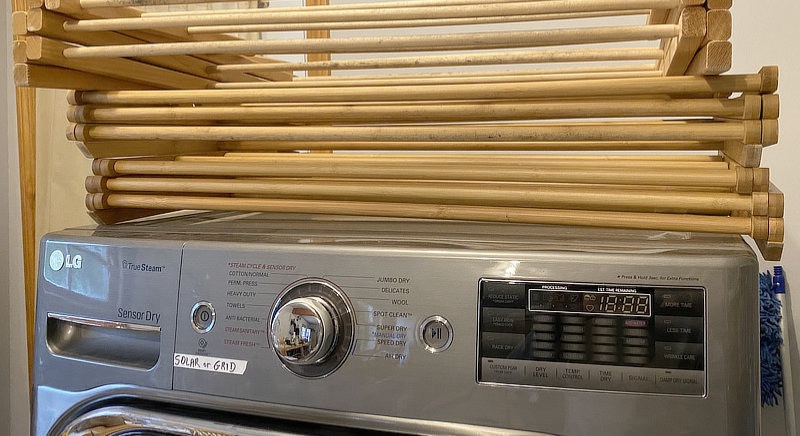
We also have a outside clothes line that gets used a lot during favorable weather.
[ Read:
A Washboard Is A Great Survival Prep Item
